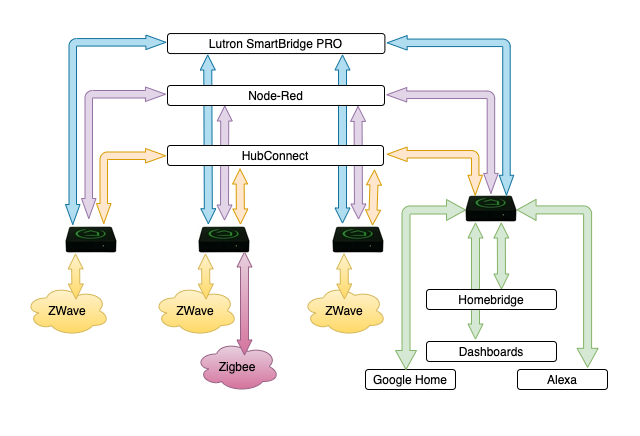I don't know if this will be helpful to you or not, but I used a method for migrating my C4 Zwave devices to 2 C7's that's a bit different than what @bravenel suggested. It works for me, but it may not help you.
I actually have 4 hubs, instead of the 2 you are considering, however the princiiple is the same, and you touch on the method in your questions 1 and 2.
The first thing I did was install my new hub in it's permanent location, and then turned on Hub Mesh on both my old hub and new hub, and shared all my devices from my old hub to my new hub.
Then, I rewrote all my rules on my new hub, using the Hub Mesh devices. I disabled and removed each old rule from the old hub. This reduced the overall workload on the old hub, and I reduced this further by moving my Sonos and Hue integrations onto the new hub.
Once that was done, I began moving Zwave devices from my old hub to my new hub, by using sound mesh building principles and starting with a new repeater installed right next to the new hub, and then moving outward. Fortunately, I had placed the first of the new C7s a distance from my old C4. This allowed me to build a new mesh by taking devices furthest from my C4 out of it's mesh, allowing me to build the new C7s mesh over time without massive disruption to my C4 Zwave network.
The trick of this technique, is that when you remove the devices from the original Hubitat, the Mesh marks them "offlline". When I subsequently added the devices to the new Hub, I named the devices very close to the same name as previously (Usually with a room prefix), and then by using the device details tab of each "Offline" device, I clicked on the rule(s) that device was used in, and replaced the "offline" device with the device on the new Hub.
Once all the "used by" links were gone, I deleted the "offline" device from the mesh, and moved to the next device or devices.
This way, I was able to transition my devices, at my own pace without breaking a lot of things for more than a few moments.
In my case, I already had all my rules running on a C5, and I'm transitioning my devices off my C4 to the two C7s at opposite ends of the house, gradually eliminating the C4 from the equation. But 2, hubs, 4 hubs or 7 hubs, the technique should be similar.
It really means I don't have to move everything at once!
S.




